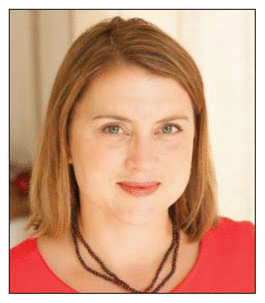
Figure 1
Tania Mysak
At a recent meeting, a speaker related her experiences recovering from a head injury. Her relatively minor fall had led to a form of aphasia serious enough to make basic communication difficult. Her work and family life were forever altered. Although the objective of the talk was to provide that all-important “patient perspective”, I began to reflect on all my years of practice, primarily with neurology patients. How many times had I witnessed similar scenarios in which someone’s life had been profoundly affected because an injury had left them with an inability to understand or express language?
Moments like these make us acutely aware of how we take communication for granted until something goes awry. However, even when our sentences are properly structured or spoken, we can still find ourselves not understanding or being understood. Maybe a patient leaves an encounter with a care provider confused by information and choices not fully understood. Perhaps a well-intentioned e-mail is misinterpreted, which leads to several more e-mails and finally an in-person meeting to resolve the issue. Maybe a pharmacy leader becomes frustrated with colleagues who are unaware of a new department policy, despite its having been communicated multiple times.
The National Association of Pharmacy Regulatory Authorities outcomes for graduating pharmacists include communication skills, yet they largely focus on proficiency in written or verbal language, or on empathetic interview skills with patients—all valuable competencies, but are they sufficient for today’s complex communications challenges and modes of consuming information?
The Canadian Society of Hospital Pharmacy (CSHP) Excellence targets consider communication skills as well. Our survey (https://www.cshp.ca/what-we-heard) indicated that only about two-thirds of patients (68%) were satisfied with their conversations with the pharmacy team. The same proportion felt that communication between health care providers wasn’t good. Reflecting on your own practice or the management of your team, what will it take to achieve good communication with both patients and colleagues? As a profession, can we articulate our value and needs to external stakeholders, or do we suffer from too much “pharmacist-speak” and an inability to convey our messages to diverse audiences?
Similarly, CSHP must collectively reflect upon our own communication with our members and external stakeholders. Countless volunteer and staff hours are devoted to creating high-quality products such as our educational events, tools for practice, the Excellence Program, and even this journal. Are our members aware of these products? CSHP has worked diligently on successive strategic plans to advance the profession, but are the channels of communication between the leadership and the membership open enough to know whether these plans are aligned with what our members need and want? A clear-eyed look at CSHP’s own communications competencies will undoubtedly show there is room for improvement.
|
|
||
|
Figure 1 |
||
Modern tools of communication are as sophisticated, powerful, and complex as the medicines we have in our pharmacies. Data mining, interactive social media, and advanced surveying are common now. But which ones we select, when we use them, how they interact with our individual members … these represent a skill set we must acquire to start a real conversation with and among our membership. To that end, CSHP’s leadership is creating a marketing and communications team, which will complement the excellence we now have in our professional practice and corporate services teams. As a first step, a new Director of Marketing and Communications position will be created and filled this spring. This new position will give us the communications competencies we need to discover and meet the needs of CSHP members, our external partners, and the profession at large.
George Bernard Shaw once said, “The single biggest problem in communication is the illusion that it has taken place.” It’s a problem that CSHP plans not to have! Stay tuned.
Canadian Journal of Hospital Pharmacy, VOLUME 72, NUMBER 2, March-April 2019